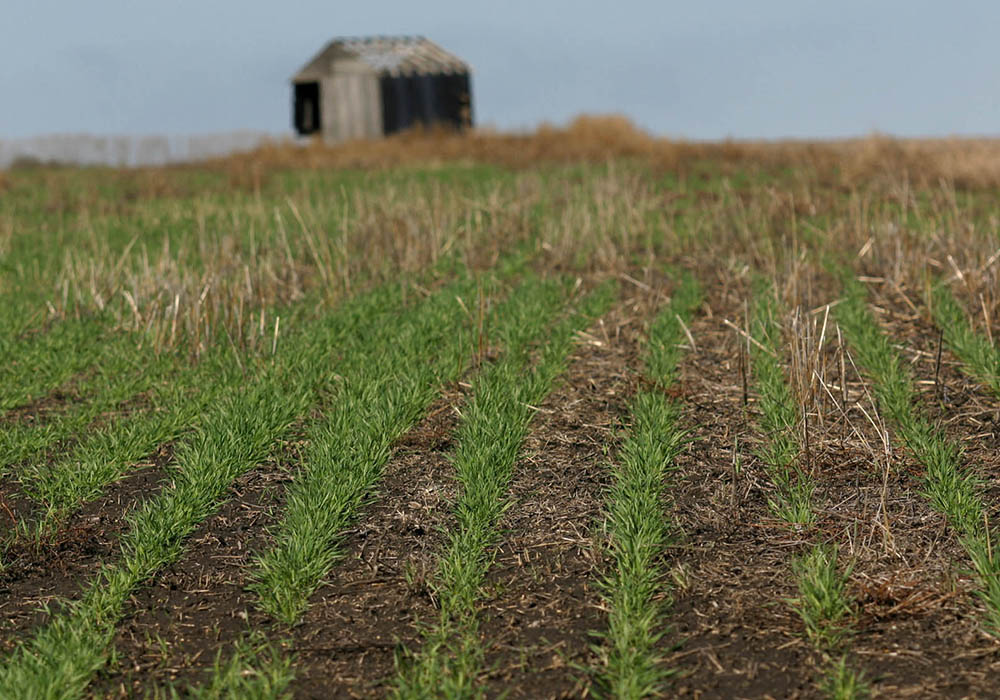Dry conditions threaten U.S. winter wheat crop

The U.S. winter wheat crop is heading into dormancy in the second worst condition of this century.
The U.S. Department of Agriculture reports that 23 percent of the crop was in poor to very poor shape as of the end of November.
It is the lowest rating for that period since 2012.
“Across portions of the Great Plains and Northwest, establishment of the wheat crop has been hampered by lack of topsoil moisture,” the USDA said in its last crop condition report for the calendar year.
DTN ag meteorologist emeritus Bryce Anderson said seasonal forecasts suggest some improvement for the Northwest in 2022 with above-normal precipitation forecast for the winter and early spring.
“The southern Plains, however, has a dominant below-normal indication for precipitation through not only post-dormancy but all the way into Northern Hemisphere summer 2022,” he wrote in a recent column for DTN.
“If that forecast verifies, winter wheat may struggle with dryness as the crop goes through its jointing, heading and filling stages.”
MarketsFarm analyst Bruce Burnett said a La Nina weather event is in place, and that typically results in a dry winter for the southern U.S. Plains region that could extend into spring.
“It’s something that we have to watch very, very closely,” he said.
Burnett isn’t overly concerned about the poor crop condition ratings because winter wheat has an incredible ability to rebound.
However, he said it has been abnormally warm so far this winter, which is causing a further drying out of the soil. Parts of Colorado recently recorded winds of 170 km-h, which also doesn’t help.
The drought in the southern Plains is not as severe as it is in the Northern Plains, but it is expansive and if conditions don’t improve early in the new year it could spark a rally in wheat markets, including spring wheat.
If crop conditions get worse in January and February then watch out. That is what triggered the record price spike in 2008, said Burnett.
It’s why he is not in the same camp as many traders who believe the wheat highs are already in.
It is unlikely that prices will rival the 2008 highs of $20 a bushel, but any signs of big trouble with the U.S. hard red winter wheat crop could drive nearby Minneapolis futures prices to the $13 to $15 per bushel range.
“If we remain dry, I certainly think that’s likely to happen,” said Burnett.
He noted it is still very dry in Western Canada and parts of the northern U.S. Plains region, such as Montana. He also is expecting a decline in Canadian spring wheat acres due to stiff competition from other crops.
Other supportive factors include Coceral’s forecast that European Union wheat production will fall by more than three million tonnes in 2022.
As well, wheat demand continues to be strong from global buyers such as Algeria, Iran and Turkey.
Burnett said cash prices are good, so he is not discouraging sales, but he finds it hard to be bearish spring wheat right now.
Contact sean.pratt@producer.com
Source: www.producer.com

